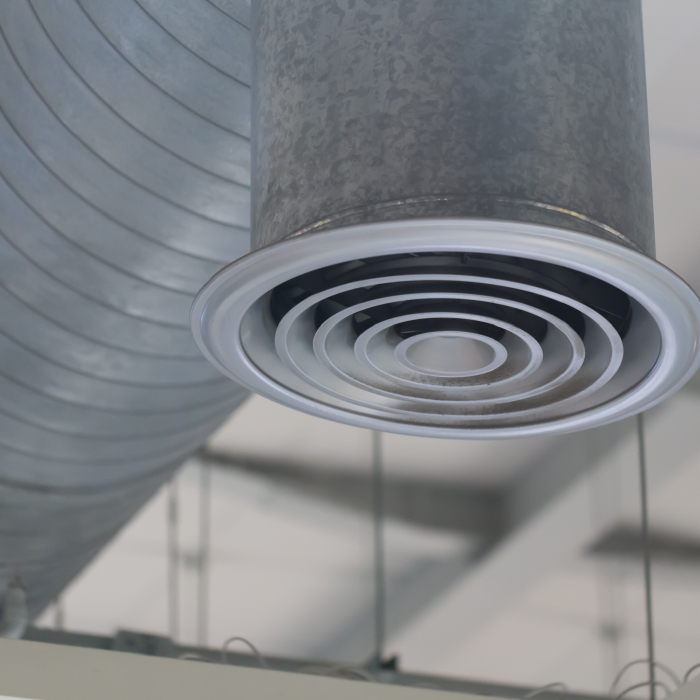Commercial HVAC systems, which stand for heating, ventilation, and air conditioning, are quite essential in establishing a comfortable and healthy indoor environment inside large buildings such as offices, shopping malls, hospitals, and industrial facilities. These systems are much more complex than the residential versions because they have to contend with issues that arise from larger spaces, various occupants, and a variety of heating and cooling needs. A basic understanding of the vital components that make up a commercial HVAC system is somewhat useful to building managers, technicians, or business owners for perfect operation, energy efficiency, and longevity. Every component somewhat controls the temperature, quality of air, and humidity level.
What Are the Key Components of Commercial HVAC Systems?
What Are the Key Components of Commercial HVAC Systems?
Heating Units: Boilers and Furnaces
The heating unit of any commercial HVAC system will take control during winter and keep the indoor environment warm. In commercial buildings, two common types of heating units are used: boilers and furnaces. Boilers distribute heat by providing water or steam to radiators or underfloor heating systems, which are ideal in huge spaces needing consistent heating. They usually run on fuel such as natural gas, electricity, or oil. A furnace, however, generates heat by burning fuel (natural gas, propane, or oil) that is blown using blowers along ductwork to distribute the warm air. The furnace provides quick heating, while the boiler offers a more even heat distribution and energy efficiency for larger buildings.

Cooling Systems: Chillers and Air Conditioners
While keeping the air-cooled indoors in the warmer months is necessary for any commercial HVAC installation, cooling systems play an important role. The common cooling devices used in commercial buildings include chillers and air conditioners. Chillers are normally used to remove heat from a building via a refrigeration cycle working using air-cooled and water-cooled systems. Air-cooled chillers have fans to cool the refrigerant rejecting heat while water-cooled chillers reject heat in cooling towers and thus are quite efficient when used for larger-scale applications. Commercial air conditioning systems resemble those employed in residential buildings, albeit on a much larger size. All these processes involve compressors, refrigerants, and evaporator coils to absorb and reject heat in cooling down the room.

Ventilation Systems: Air Handlers and Ductwork
Ventilation is another critical aspect of any commercial refrigeration that provides movement of air, contaminant removal, and indoor air quality maintenance. The air is handled, then ductwork, one of its five main components for ventilation. Air handlers operate as large units to condition and circulate air throughout the building. Air handlers include equipment such, as working together to condition and distribute air appropriately. Working well with air-moving machinery, air handlers with filtration help with removing dust, allergens, and pollutants from the air, rendering it a cleaner environment. The ductwork is the other half of the ventilation system, carrying conditioned air throughout the building. Well-designed ductwork guarantees an even distribution of air and hence prevents hot or cold spots.
Air Filtration and Humidity Control Systems
Air quality and humidity are crucial for the indoor environment of a commercial area to be healthy and comfortable. It helps to improve indoor air quality by eliminating dust, allergens, bacteria, and other airborne pollutants. The common filter types are HEPA, or High-Efficiency Particulate Air filters, through which air can be electrostatically filtered or passed through activated carbon. Proper air filtration prevents respiratory issues, controls the airborne spread of diseases, and maximizes occupant well-being. Other than air filtration, humidity control systems are also important parts of the commercial heating systems. Keeping the relative humidity level in a specified range (usual 30-50%) eliminates mold growth, condensation, and discomfort.
The End
Complex yet essential for considering commercial HVAC technicians, they all ensure extreme comfort, good quality of airflow, and energy efficiency in large buildings. Every component-from heating units and cooling units to ventilation systems, thermostats, and air filtration-holds its importance in providing optimal conditions inside the room. Their proper maintenance and inspection at regular intervals can reduce the breakdowns, increase equipment life, and lower energy bills.
